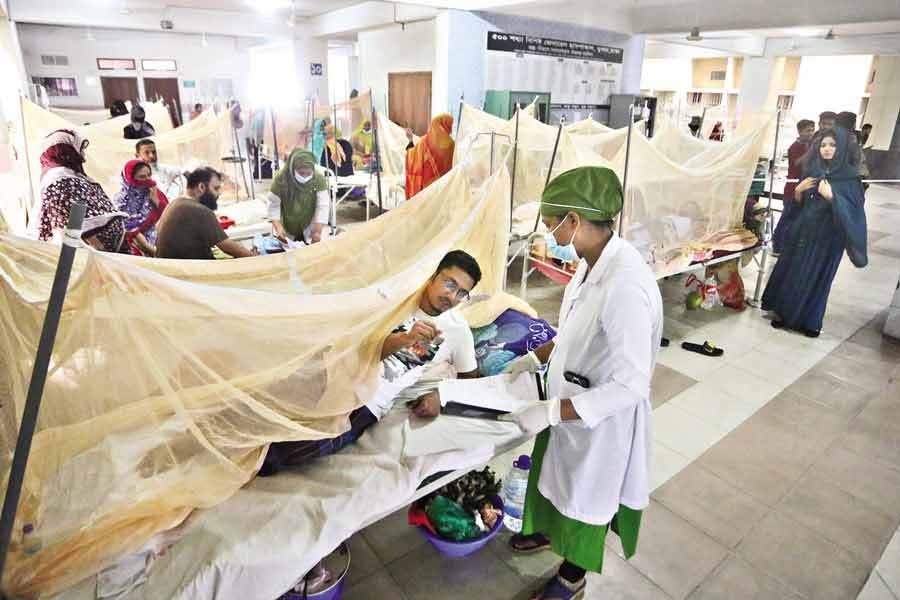Though the suspected scourge of dengue still being at a preliminary stage, some epidemiologists have begun expressing their premonition over a wide-scale outbreak. Hospitalisation of dengue patients continues unabated. The omens came to the fore after the very first pre-monsoon spells of rain. The full-scale Bangla season of monsoon is still a week away. It's now common knowledge that monsoon marks the onset of the debilitating dengue. It is a disease of the tropical monsoon, found mostly in South, South-east Asia. It follows spells of rainfall leading to collection of stagnant, clean water in small and large open containers. The dengue virus-carrying Aedes Aegypti larvae grow there from the eggs laid by mother mosquitoes. The dengue fever pathogens enter the body of a healthy person upon being bitten by the newly adult mosquitoes.
The process of dengue transmission is a plain and easy one. So is the task of wholesale destruction of the mosquitoes at the larva stage through an unremitting cleanliness drive round the year. To the misfortune of the Dhaka residents, their two municipal agencies --- Dhaka South City Corporation (DSCC) and Dhaka North City Corporation (DNCC) have yet to be called prompt in executing their responsibilities to keep Dhaka completely free of the dengue malady. This failure to go by their obligatory duties only adds to the Bangladesh capital's notoriety as a perennially dirty and unwieldy city. Alongside the two city corporations, large sections of the Dhaka residents have also proved themselves continuously unconcerned about the deteriorating state of the city in terms of dengue spread.
Providing effective treatment to the dengue-struck people and keeping the vast areas under the two Dhaka city corporations clean and disease-free are two separate assignments. In a DGHS survey carried out in last May, a large percentage of under-construction and high-rise buildings in Dhaka were found vulnerable to dengue. The survey found three DSCC wards at 'high risk' and ten at 'medium risk' of outbreaks. Nine wards in DNCC area have been found as being at 'medium risk'. The survey has identified several places and objects that normally aggravate the dengue outbreak in the capital. Those include rain water filled areas, plastic drums, buckets, cement-made water tanks, and flower tubs. In other surveys conducted by the relevant agencies, green coconut shells, emptied discarded ice-cream and fast food boxes etc littered in house backyards have been found to be prominent culprits behind dengue outbreaks. Meanwhile, DNCC has lately released 'guppy fish', which feed on mosquito larvae. The fruits of this step have yet to be ascertained. On the other hand, few areas have seen the visits by the teams conducting the DSCC-announced house-to-house search for discarded water containers.
Lately, admission of dengue patients to hospitals has been on the rise. With doctors and health workers urging people not to rush to hospitals upon discovering primary symptoms of the dengue fever, and get treatment at home by taking common analgesics, many dengue-suspected people remain stay put at residences. By following this guideline many got fully cured in the past. But the dengue strain associated with continued 'bone crushing pain', fever coupled with skin rashes and fast drop in blood platelet forces relatives to take their patients to hospital. The prevailing conditions after taking worse turns led to terrible consequences in 2019 --- an appalling 179 deaths. The year 2021 saw over 100 fatalities. The country first reported dengue cases in 2000. Amid these developments, it's time Bangladesh started its dengue uprooting campaign on a war footing.


